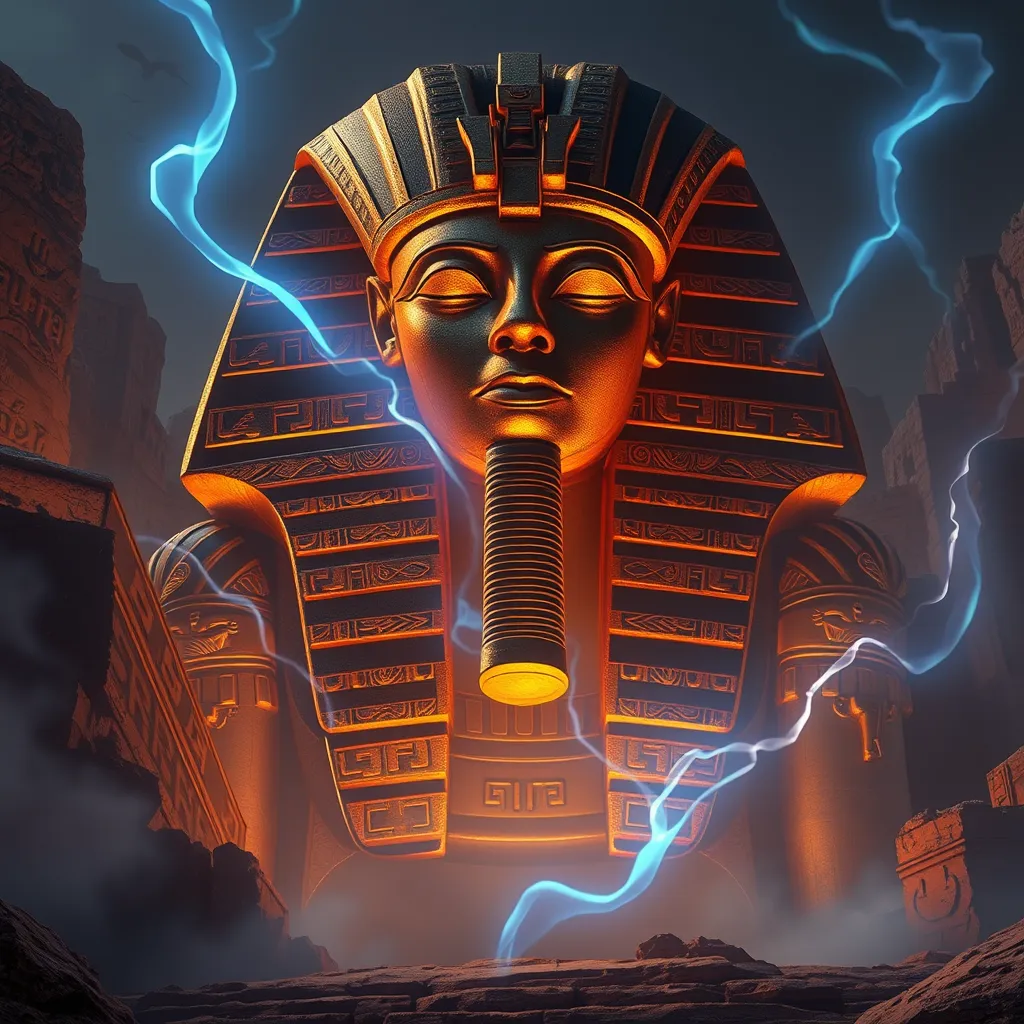The Duat: A Chronicle of the Dead
I. Introduction
The Duat, often referred to as the Egyptian underworld, is a complex and multifaceted realm that plays a crucial role in Ancient Egyptian mythology. It is not merely a place of darkness and despair; rather, it is a rich tapestry of beliefs surrounding death, the afterlife, and the journey of the soul. This article delves into the significance of the Duat, exploring its historical background, geographical features, deities, the journey of the deceased, artistic representations, and its modern interpretations.
II. Historical Context of the Duat
The concept of the Duat has its origins in the earliest beliefs of Ancient Egyptians, who viewed death not as an end, but as a transition to another state of existence. Over time, the understanding of the Duat evolved, reflecting changes in religious practices and societal norms throughout different dynasties.
- Origins in Ancient Egyptian beliefs: The Duat was initially seen as a shadowy realm where the souls of the dead would journey after death.
- Evolution of the concept: As the dynasties progressed, the Duat became more structured, with specific trials and tribulations outlined for the deceased.
- Relationship with funerary practices: The rituals surrounding death, including mummification and burial practices, were deeply intertwined with beliefs about the Duat.
III. The Geography of the Duat
The Duat is often depicted as a vast landscape filled with various realms, each with its own unique characteristics and symbolism. Understanding this geography is essential to grasp the full significance of the Duat in Ancient Egyptian thought.
- Description of the landscape: The Duat is portrayed as a dark, mysterious expanse filled with rivers, fields, and mountains, often contrasted with the living world.
- Key locations within the Duat:
- The Field of Reeds: A paradise where the souls of the righteous could enjoy eternal peace.
- The Hall of Judgment: The place where the deceased would be judged by Osiris, determining their fate.
- Symbolism of various realms: Each area within the Duat symbolizes different aspects of the afterlife, reflecting the beliefs and hopes of the Ancient Egyptians.
IV. Deities and Entities of the Duat
The Duat is populated by numerous deities and entities that play pivotal roles in the journey of the deceased. These gods and spirits were believed to govern different aspects of the afterlife and the trials faced by souls.
- Major gods associated with the Duat:
- Osiris: The god of the afterlife and resurrection, who oversees the judgment of souls.
- Anubis: The god of mummification and the protector of graves, who guides souls through the Duat.
- Lesser-known spirits: Various lesser deities and spirits, such as the “42 Judges,” assist in the judgment process and provide support to the deceased.
- Guardians and protectors: The Duat is also home to several guardians who protect the souls from malevolent forces and ensure safe passage.
V. The Journey Through the Duat
The journey through the Duat is fraught with challenges and trials that each soul must navigate to reach their final destination. This journey is not only a physical passage but also a spiritual one, representing the soul’s transformation.
- The trials and challenges: The deceased must overcome various obstacles, such as serpents and demons, that guard the paths of the Duat.
- The “Weighing of the Heart”: A pivotal ceremony where the heart of the deceased is weighed against the feather of Ma’at, symbolizing truth and justice. A balanced scale indicates a worthy soul.
- Rituals and spells: The Egyptians believed in the power of spells, inscribed on tomb walls, to aid the deceased in their passage through the Duat.
VI. Symbolism and Art in the Duat
Artistic representations of the Duat provide insight into the beliefs and values of Ancient Egyptians regarding death and the afterlife. Tomb art and inscriptions served not only as decoration but also as spiritual guides.
- Depictions in tomb art: The Duat is frequently illustrated in tombs, showcasing various scenes of the afterlife, the journey of the soul, and encounters with deities.
- Symbolic meanings: Common symbols like the scarab (representing regeneration) and the lotus (symbolizing rebirth) appear throughout the art, reflecting core beliefs about life and death.
- Reflection of beliefs: These artistic representations reveal the Egyptians’ intricate understanding of death, illustrating their hopes for a favorable afterlife.
VII. The Duat in Modern Interpretation
The legacy of the Duat extends beyond Ancient Egyptian culture, influencing contemporary literature, media, and spirituality.
- Influence on literature and media: The concept of the Duat has inspired numerous works of fiction, films, and art, often exploring themes of death and the afterlife.
- Modern spiritual interpretations: Some contemporary spiritual practices draw on the symbolism of the Duat, using its concepts to explore personal journeys of transformation and healing.
- Relevance in discussions of life after death: The Duat continues to be a point of interest in discussions about mortality, reflecting humanity’s enduring quest to understand what lies beyond this life.
VIII. Conclusion
In summary, the Duat represents a profound aspect of Ancient Egyptian culture and spirituality, embodying their beliefs about death, the afterlife, and the journey of the soul. Its intricate geography, rich mythology, and artistic representations provide a window into the minds of a civilization that placed great importance on life beyond death. Understanding the Duat not only enriches our knowledge of ancient beliefs but also invites us to reflect on our own views of mortality and the afterlife, underscoring the enduring legacy of these ancient narratives in contemporary thought.




